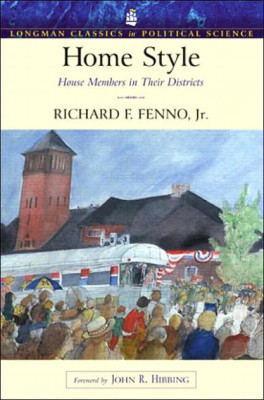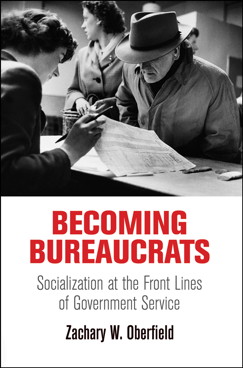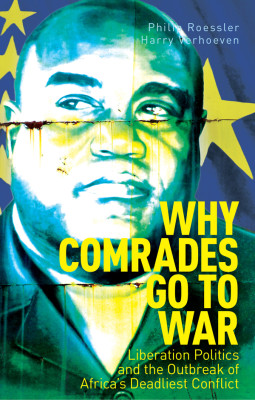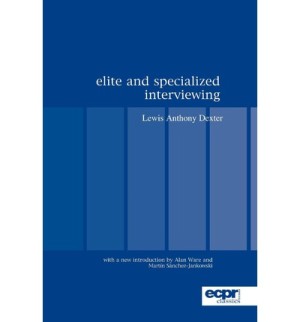Elite Interviewing
(Written by C. Lawrence Evans, William & Mary)
For students at the College of William and Mary planning a research project in the general area of political science, there are a variety of empirical methods from which to choose. For example, you might proceed by conducting a large-n statistical analysis of an existing data set compiled by another scholar; by designing and producing your own large-n quantitative data base for the purpose of statistical analysis; by producing an in-depth case analysis of a relatively small number of observations using textual, archival, or other largely quantitative evidence; through personal observations related to your topic gathered via an internship experience or other “participant-observation” opportunity; and by conducting personal interviews at the elite or mass level.
Although political science as a discipline has evolved over time to place increasing evidence on large-n statistical studies, contemporary scholars still make regular use of the other methodologies. Indeed, many political scientists emphasize the value of so-called “mixed methods” studies that combine more than one of the aforementioned methodological approaches. The purpose of this learning module is to present the strengths and weakness of elite interviewing as a research tool and to describe some of the practical logistics in conducting such research and interpreting and presenting the results.
By “elites,” I am referring to people you might want to speak with – also called “interviewees” or “respondents” – who make their living at politics or otherwise play leadership roles of some form in the political process, as opposed to ordinary voters and citizens. Scholars conduct interviews at both the elite and mass levels, but there are some important differences in how interviews with elites and mass actors should be conducted and interpreted. Here, our focus is on interviewing political elites. That said, much of what follows will also be of use to students considering interviews with mass level political actors.
Personally, my own teaching and research at the College of William and Mary focuses on American national institutions, especially congressional politics and policy making. Not surprisingly, most of the examples that I use in this module relate to the study of American politics and life on Capitol Hill. I generally hew to the adage, “Teach what you know!” Still, my hope is that the lessons that might be learned here can also be applied to a wider range of research topics.
This module is structured around eight questions that capture different stages in the design and implementation of elite interview protocols, and in roughly the order in which you might consider them in constructing your own project.
| 1. When should I rely on an elite interview? | 5. How should I conduct myself during the interviews? |
| 2. Who should I interview? | 6. What are the appropriate ways to interpret, analyze, and aggregate the results? |
| 3. How can I convince elites to participate in my study? | 7. How should the results of elite interviews be presented in my research study? |
| 4. How should I structure these Interviews? | 8. What are some examples of existing scholarly research projects that have made particularly appropriate and insightful use of elite interviews? |
View Module as PDF
1. When to Use Interviews
As you consider your topic, the first issue is whether evidence relevant to your research question or hypotheses is available from sources other than personal interviews that may be more reliable and systematic. Interview based evidence relies on the personal perceptions of the respondent, which in turn may be distorted in some way by a lack of information or bias. If your topic can be addressed with quantitative indicators or archival evidence, the project probably should start there, with interviews being used to shed light on the meaning of any statistical findings and perhaps to extend the analysis. Similarly, especially in U.S. national politics, there is ample coverage of political topics in the media, public records like meeting transcripts and reports, and pieces published by reliable think tanks. If significant light can be shown on our question via such sources, you should probably begin your empirical work there.
For many research topics, however, the existing evidentiary base is weak or there is significant uncertainty about how a question should be posed, and which hypotheses merit exploration. Consider the question of what factors influence the committee assignment requests of members of the House of Representatives. The question is fairly straightforward. The existing literature generates a number of plausible hypotheses (district level factors, a member’s party or ideology, the likelihood that the request will be granted, and so on). But contemporary committee assignment requests are not generally available to the research community. As a result, scholars often conduct interviews with a sample of members or top staff and ask questions about their committee priorities and the relevant motivations.
Alternatively, there often is considerable uncertainty about the best way to structure a research question and what hypotheses are worth testing. For instance, congressional scholars are interested in the extent to which party leaders exert an independent impact on legislative outcomes in the U.S. House and Senate. But within the field there is significant uncertainty about the nature and source of that impact. Is it due to informational advantages at the leadership level? Does leadership power derive from control over internal congressional patronage and campaign money? Or do members defer to their leaders because their individual electoral fates depend in part on the reputation of their party as a whole? There is no scholarly consensus about the source of leadership influence, and, as a result, it is difficult to agree on the appropriate underlying theoretical model and hypotheses to test. Under such circumstances, interviews with leaders, leadership staff, and other close observers of the leadership at work can shed light on where scholars should look for the sources of party influence in the legislative process.
More generally, interviews also can be used in conjunction with other modes of inquiry – a mixed methods approach. For a scholar studying the congressional committee assignment process, for instance, some insight might be gleaned from a statistical analysis of the characteristics of members found on different panels, which can be gleaned from public sources, and also by examining media accounts of the committee assignment process. Interviews also could be conducted as a check on results from the aforementioned analysis, and also to further extend and enrich the study.
2. Selecting Interviewees
If your research topic can be usefully approached via elite interviews, the next step is to decide whom to interview. Most often, this will seem fairly straightforward. If you are studying some aspects of member behavior in Congress, you likely will want to speak with members, or with staff who are knowledgeable about their behavior. If you are interested in the strategic behavior of interest groups, you likely will want a sample of interest group officials or other people familiar with their work.
The precise identity and number of interviewees will depend on the topic and the basic structure of the study. For instance, if you are interested in the relative influence of the groups lobbying for and against an environmental bill in Congress, who you want to talk to will depend on your substantive emphasis. If the lens is trained at the committee level, one approach is to speak with the staff person responsible for environmental issues for each member of the committee or a sample of that membership. Alternatively, you could speak with representatives of the groups themselves to gauge their impressions of their organization’s impact. Or you could talk with a set of media and/or scholarly observers of the committee at work.
As with all empirical research, you need to decide what the unit of observation is for your research. And then you need to think about the logic of sampling, which is introduced via another learning module on this site. The identity and number of interviewees, in other words, needs to derive from the basic logic of the study and there are no hard and fast rules. That said, here are two general pointers.
First, especially for undergraduate students, the likelihood of obtaining a large number of interviews will rise if you opt for interviewees who are not prominent members of Congress, high-level agency figures, or top leaders of significant advocacy organizations. Such individuals have very tight schedules and are unlikely to agree to spend time speaking with you. Conversely, the lower you proceed down the professional food chain – e.g., by relying on staff rather than members of Congress – the more likely you are to secure interviews.
Second, if you want to generalize about a political phenomenon, you likely will need to conduct more than a few interviews. Indeed, depending on the unit of observation, it is not unusual for congressional scholars to conduct 50 or more interviews, again depending on the relevant unit of analysis. If the goals of the interview process are more exploratory – for instance, you are trying to shed light on results produced by a statistical analysis – then the number of required interviews may be much smaller.
3. Setting up Interviews
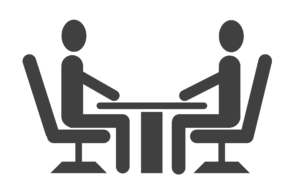
Once you have devised a targeted set of interviewees, a next step is to make contact and arrange for the session to occur. Once again, the best mode of approach will depend on the topic. For example, for sitting members of Congress, I generally telephone the office and ask for the fax number of the scheduler. I then fax that individual a formal request to speak with the member. For interviews with aides, in contrast, I generally contact the staff member directly via email or over the telephone. For other types of elites – interest group officials, bureaucrats, and so on – I usually rely on email if I can secure the address and then follow up with a telephone call if there is no response.
Especially for elected officials and individuals in overtly partisan or political jobs, it often helps to have someone they trust vouch for you ahead of time. For undergraduate students, one approach is to first contact William and Mary alumni or other individuals with whom you have some relationship who can in turn introduce you to people worth interviewing for your research. Yet another approach is to begin interviewing and then ask some of your early interviewees for advice about whom else to contact. If the College is supporting your project in some way (e.g., Charles Center funding, or as part of an independent study or honors thesis for credit), this also is worth mentioning when you make the contact requesting an interview. The bottom line – Anything you can do to make your study appear more credible and less potentially threatening to an interviewee, the more likely that individual will agree to speak with you.
In requesting an interview over the phone or in writing, you will want to briefly introduce yourself and provide a sentence or two about the nature of your project. You need to make very clear why you need to speak with the individual. Ideally, you also should mention about how long you expect the interview to take and the ground rules for quotation. For member interviews on Capitol Hill, the standard length is 15 minutes. With staff, a request for 30 minutes is not unreasonable, but I would hesitate before requesting any more. Also be sure to mention whether the interview will be “on the record” (everything the interviewee says can be attributed to them by name), “not for attribution” (you can use quotes, but will not identify the speaker by name), “on background” (no quotes allowed and no mentioning of the interviewee by name), or “off the record” (purely for contextual purposes, or perhaps as a check on evidence you have already gathered elsewhere).
Finally, when conducting elite interviews, another issue is whether to conduct the interviews over the telephone or Skype, or to travel to the interviewee’s workplace and conduct the session in person. For the most part, in-person interviews are better. People are more likely to open up to individuals when the meeting is in person. Conversations also tend to flow more readily when the participants can see your face and gauge body language. An interviewee is also likely to give you more time and attention if you are right there in the room with him or her. My experience has been that telephone interviews are almost always shorter and less informative than are in-person sessions. That said, if you need to conduct a large number of interviews, it might be necessary to do some or all of them over the telephone. It still is possible to learn a lot from phone interviews, but there are downsides.
4. Structuring the Interview
The success of your interviews largely will depend on how well you structure the interview protocol, or the set of questions you intend to ask. The protocols for elite interviews typically fall into one of three categories – structured, semi-structured, and unstructured. Structured interviews are just that. The questions are relatively precise, always presented in the same order with the same wording, and are conducive to generating responses that can be quantified. Structured interview questionnaires are analogous to survey questions that might be included in a public opinion poll. The benefits of this approach are that the results can be more readily aggregated. On the other hand, if the goal of the interview is exploration and hypotheses generation, as opposed to hypothesis testing, the more structured the interview questionnaire, the less likely you are to generate useful information.
At the opposite end of the continuum are unstructured interviews. These sessions typically begin with general questions and the researcher tries to have as free-flowing a conversation as possible with the interviewee. Here, the goal is to let the person being interviewed have considerable control over the direction of the conversation. The more exploratory your goals with the interview process, the more likely that an unstructured approach will be appropriate. Alternatively, if you already know a lot about the phenomena under study and your goal is to test hypotheses, unstructured interview protocols are less likely to be informative.
Semi-structured interviews fall somewhere in the middle, and are probably the protocol type most often used by political scientists. Here, the protocol is centered on a set list of questions, but the researcher also takes steps to make the interaction as much like a conversation as possible. So there is time for follow up questions that may vary from interview to interview, some open-ended questions are included in the protocol, and depending on the flow of the conversation, even the structured questions may not be asked in precisely the same order. Semi-structured interview protocols attempt to combine the systematic benefits of structured questions with the more exploratory information that you can pick up with the unstructured approach. Most likely you should begin by considering a semi-structured interview protocol, and then only veer to more or less structure if your project necessitates such an approach.
With relatively structured interview questions, some scholars present interviewees with forms or questionnaires to be filled out as part of the interview. For instance, if you are asking staff to Senators why their principals picked their committee assignments, you could ask them to fill out a form with six or seven possible motivations listed (personal interest, constituency ties, and so on) and boxes signaling whether the motivation was important, somewhat important, or unimportant. If you do use such written forms or questionnaires, be sure to keep them short, simple, and consistent with the coin of language utilized in the relevant workplace. Do not make your interviewees feel like they are taking a test administered by a college student.
In putting together your questions, be sure that you use language that will be familiar and comfortable to the individual being interviewed. Try your best to think about the topic from the interviewee’s perspective and discard any academic jargon or technical terms. Avoid factual questions for which answers can be secured via publicly available sources. Also be sure to ask questions that touch as directly as possible on the interviewee’s personal experiences and observations, rather than generalizations. In your questions, be as concrete as possible. For instance, if you are interviewing staff members about why lawmakers join committees in Congress, try to ask them why a particularly member joined a particular committee, rather than rely primarily on questions aimed at getting them to generalize about the committee assignment process. The act of generalization should be mostly your job as the researcher, not that of the individual you are interviewing in search of evidence about which to generalize.
You also need to consider whether the individual being interviewed may have incentives to be less than truthful, or may simply lack the objectivity necessary to provide you with accurate information. In politics, what you see depends on where you stand. Of course, the more concrete and specific your question, the less likely that partisan or other distortions will color the response. But some questions are going to be sensitive no matter the level of specificity. One colleague of mine once interviewed a sample of lawmakers and staff about the treatment of female legislators in that chamber. I played a role in setting up some of those sessions and heard back later that certain of the interviewees were less than comfortable with the questions that were asked. The less comfortable your respondents are with your protocol and topic, the less likely you are to get accurate information.
Finally, it is always a good idea to pre-test an interview protocol before taking it to the field. The pre-test allows you to refine your language and increase your confidence that the questions are appropriate to your goals. For the pre-test, select one or two interviewees and try out the question list on them. At some point during the session, ask the interviewee if the questions make sense, whether the wording is appropriate, and whether or not some questions should be added or subtracted. Pre-tests can be invaluable and if at all possible you should include this stage in your research design.
5. Behavior
The most important advice about how to behave in elite interviews is simply to be as professional as possible. Dress in an appropriate manner. If you are conducting the interviews in or near a worksite, dress professionally or otherwise in a manner that mirrors the dress of the interviewee. Arrive five or ten minutes early. Be as straightforward and personable as possible.

When scholars discuss the process of elite interviewing, they often emphasize the importance of establishing rapport with the interviewee. For what it is worth, my advice would be to not worry all that much about rapport as an undergraduate student. For one, in the contemporary political environment of U.S. national government, prominent political figures and staff will always treat interviewers in a guarded fashion. It is very difficult for even the most seasoned professional researchers to get them to open up and make statements they would not be comfortable sharing with the media and general public. Elite level actors also tend to be adept at personal interactions and more than able to make an interview session with a researcher feel comfortable and smooth. In establishing the tone of an interview, my advice is to be as straightforward as possible about whom you are and what you are seeking to accomplish via the interview. If you are a little nervous, say so.
That said, if you are interviewing more than one individual as part of your project, be careful about making comments during one session that may tip off the interviewee about the identity of other people you have already spoken with. Even if the interviews are being conducted “on the record,” if the interviewee can figure out from your remarks the names of other people included in the study, that individual will assume that his or her identify similarly will be signaled to other colleagues. You need to make each interview as self-contained and private as possible.
Especially for undergraduates and other young researchers, your age and relative inexperience is likely to be a factor in the interview. The person being interviewed may decide to “instruct” you by critiquing some of the questions you are asking or by otherwise taking control of the exchange. My advice would be to tolerate such instruction as much as possible, while doing your best to get your questions answered. Generally, if you allow such an interviewee to partially re-write your protocol toward the beginning of the session, as the exchange proceeds you can go back to your original questions and get the information you need. Just be cognizant that your age and experience level is an unavoidable feature of the interview process.
6. Making Sense of Results
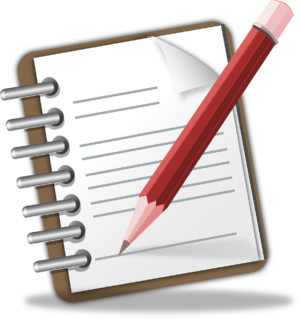
The answers you receive to your questions, as well as unanticipated comments and insights that are mentioned by the person you are speaking with, constitutes the raw data for analysis. You need to have as complete and accurate a record of the conversation as possible. Most researchers take notes during an interview. Your notes, of course, are likely to be somewhat fragmentary, perhaps featuring key words and phrases. As a result, it is necessary to flesh out your notes as completely and as soon as possible after the interview. When I interview members and staff, for instance, I typically jot down notes that are as comprehensive as feasible. Immediately after the interview, I head to a stairwell or cafeteria and rewrite and extend the notes. It is critical that this completion of the note taking process occur as soon after the interview ends as possible or you likely will forget important parts of the exchange. If you are taking notes, only place in quotations remarks where you are sure you have the comment exactly as the interviewee phrased it. If you are unsure about the precise wording and would like to quote this individual in your study, you can always contact them afterward via email or telephone and ask for the quote.
Alternatively, some scholars record their interviews. The advantage is that the record is far more complete and it is more straightforward to code quantitative data from a verbatim transcript than from interview notes. The downside, of course, is that interviewees may not agree to be recorded. And even if they do accept recording, the fact of it may lead them to be less than forthcoming in answering questions. Even if an interview is being conducted “on the record,” the presence of a recording device may make an interviewee less candid. Absent the recording, he or she knows that it still would be possible to deny a quotation after the fact if the comment becomes problematic. For an undergraduate researcher, recording interviews is probably not going to be feasible and you likely will need to rely on note taking.
More generally, as you complete your interview notes after the session, also jot down any impressions you have about the reliability of the exchanges and how open the interviewee appeared to be toward your questions. If you think that the individual was less than forthcoming at points during the session, record those impressions. You want your interview notes – or the transcript from a recorded session – to capture the exchange as completely as possible. When you get the chance, type your notes or transcribe the recording into a word processor and save the file.
7. Presenting Results
The results of elite interviews are more difficult to present than the quantitative results from statistical tests. If you are using a structured or semi-structured protocol, it may be possible to aggregate across interviews and show the results in a table or figure. So for instance, if you interviewed staff to a dozen or so members of Congress and asked them why they joined each of their committees, it may be possible to categorize the responses by motivation and produce a rough tally. Generally speaking, the more structured the interview protocol, the more readily the responses can be aggregated and treated as quantitative data.
Another approach that scholars often take to present the results of elite interviews is quotations or paraphrasing based on the interview notes or transcripts. If the interview was conducted “on the record,” the process is straightforward. Using the interviewee’s precise phrasing, you include the quote in the text of your research report or paper with appropriate quotation marks and a reference to the speaker by name. For interviews conducted on a “not for attribution” basis, you can include quotations or paraphrasing, with the identity of the speaker mentioned as a category – for instance, a Republican or Democratic lawmaker, or a knowledgeable staffer. Just be sure that you do not give away the identity of the speaker because of the nature of the quote and the way the statement is attributed.
If you are using interviews primarily for background information, it may make sense to mention in the text of your paper that the assertions you are making are supported by the observations and comments of participants in the process that you interviewed. Such general assertions are difficult to replicate, however, and likely will not add much to the credibility of your study. As a general rule, it usually is best to present the results of elite interviews along with evidence secured from other sources, especially publicly available and quantifiable data. In the end, the results of elite interviews tend to be most useful and compelling when they are integrated into a mixed method mode of research.
8. Examples and Illustrations
Finally, as you consider whether and how to incorporate elite interviewing into your research design, it may help to take a look at some quality examples in the literature, especially studies with appendices about the nuts and bolts of the interviewing process utilized by that author. Here are some examples that you might consider.
Home Style: U.S. House Members and Their Districts, Richard F. Fenno, Jr. A landmark study of members of Congress at home that relies on personal observation and interviews with members. The book ends with a classic appendix about elite interviews and observation-based research.
Congressmen’s Voting Decisions, John Kingdon (any edition). A unique study of how members of Congress decide how to vote on the House floor. The book includes a useful introduction and appendices describing the interview process. Kingdon’s study is a great example of the benefits of a relatively structured interview protocol.
Lobbying and Policy Change: Who Wins, Who Loses, and Why, Baumgartner, Berry, Hojnacki, Kimball, and Leech. A superb study of interest group power in Washington based in part on extensive interviews with lobbyists and other practitioners. A great example of how careful interviews can be used to produce quantitative evidence about highly complex political behavior.
Becoming Bureaucrats: Socialization at the Front Lines of Government Service, Zachary W. Oberfield. The topic of this book is public service provision at the local level. Here, the author provides an excellent illustration about how elite interviews can be applied to police officers and social workers, shedding substantial light on the attitudes and behavior of lower level public servants.
Schools In: Federalism and the National Education Agenda, Paul Manna. The author, a W&M professor, shows how interviews can be used in conjunction with statistical evidence and case analysis to enrich a study of federal education policy making.
The Beliefs of Politicians: Ideology, Conflict, and Democracy in Britain and Italy, Robert Putnam. A classic study of political culture that derives from semi-structured interviews with nearly 200 parliamentarians in two European nations.
The European Commission and the Integration of Europe: Images of Governance, Liesbet Hooghe. This book relies on elite interviews with European Commission officials. Additional information about the interviews is provided in a related report: http://www.eui.eu/DepartmentsAndCentres/RobertSchumanCentre/Publications/WorkingPapers/9836t.aspx
Why Comrades Go to War: Liberation Politics and the Outbreak of Africa’s Deadliest Conflict, Philip Roessler and Harry Verhoeven. Roessler, a W&M professor, and his colleague include a methodological appendix to their study about war in the Congo that nicely highlights the subjective nature of interview evidence.
Peacebuilding in the Balkans: The View from the Ground Floor, Paul Pickering. Also authored by a W&M faculty member, the book relies on participant-observation and interviews with mass actors, as opposed to political elites. Included is an instructive appendix about conducting mass-level interviews for students interested in pursuing such research.
In addition to these exemplary illustrations of elite interviewing by scholars, there are a number of first-rate sources about how to set up, conduct, and interpret elite interviews in political science. You should consult them for more in-depth and systematic treatments of the logistical challenges outlined in this module.
Interview Research in Political Science, Layna Mosely. A superb edited volume with articles about interview-based research methods across all subfields of political science by some of the most prominent practitioners of the method.
Elite and Specialized Interviewing, by Lewis Dexter. The author pioneered the use of elite interviewing to understand members of Congress and other American political elites. This is a dated, but still useful, introduction to the approach.
PSonline, December 2002. Included in this issue is a series of short articles on elite interviewing. The articles cover all aspects of the topic and are especially useful in techniques for semi-structured interviews, framing questions, and coding results from interview notes and transcripts.
Finally, if you need additional help, please consider the faculty profile pages of the Government Department website at William and Mary. Most of our faculty have used interviews in their own research or are familiar with the basic approach. We also can point you toward more specialized sources in your area of focus. As always, we are here to help.
